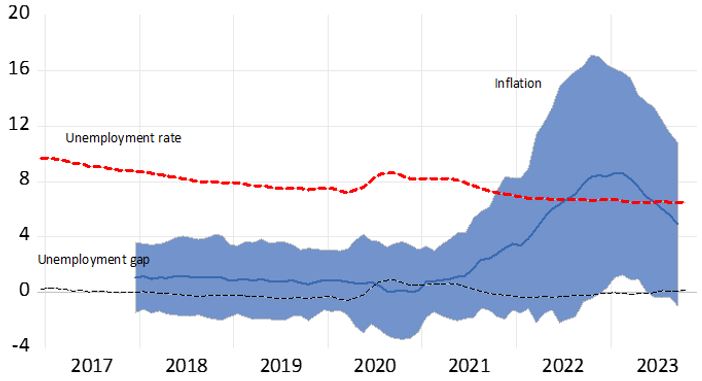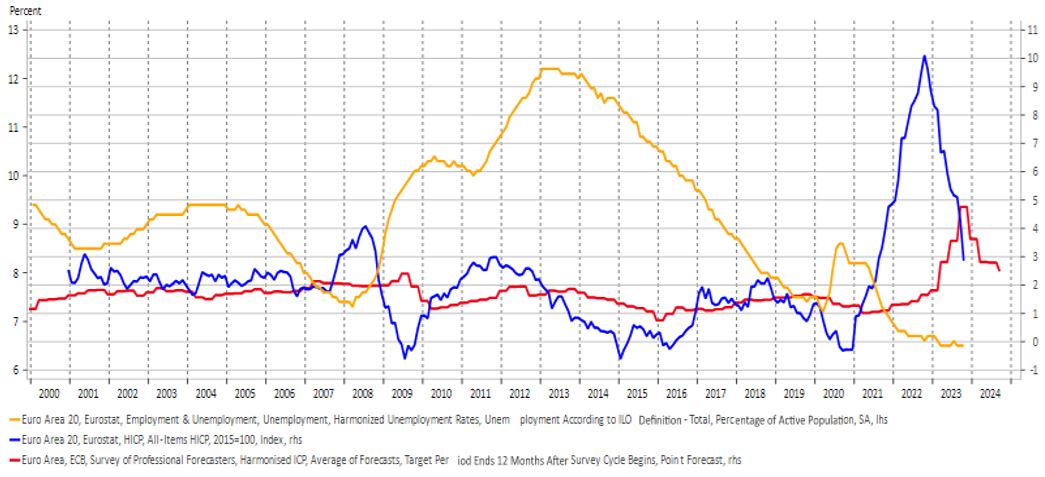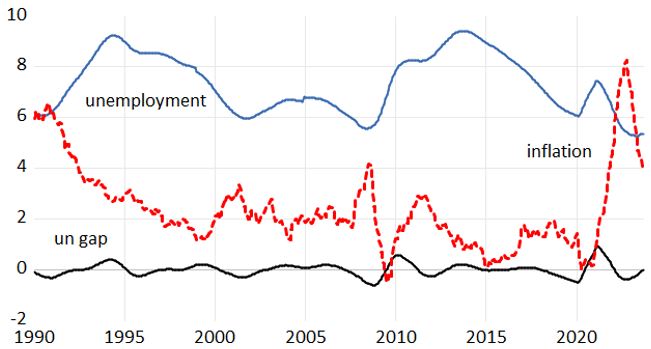References
Ari, A., D. Garci-Macia and S. Mishra (2023) Has the Phillips curve become steeper? IMF Working Paper 100. https://www.elibrary.imf.org/view/journals/001/2023/100/article-A001-en.xml.
Blot, C., C. Bozou and J. Creel (2022) Inflation expectations in the euro area: trends and policy considerations. In-depth analysis requested by the econ committee. Monetary dialogue papers. European Parliament. https://www.europarl.europa.eu/RegData/etudes/IDAN/2022/703341/IPOL_IDA(2022)703341_EN.pdf.
Carriere-Swallow, Y., P. Deb, D. Furceri, D. Jimenez and J. Ostry (2023) Shipping costs and Inflation. Journal of International Money and Finance 130, https://www.sciencedirect.com/science/article/pii/S0261560622001747.
Hukkinen, J. and M. Viren (2023) Does inflation come and go in the same way? Aboa Centre for Economics Discussion paper No.163. https://ace-economics.fi/kuvat/dp163.pdf.
Levy, M. (2023) The Fed: Bad Forecasts and Misguided Monetary Policy. Hoover Monetary Policy Conference Paper. Hoover Institution, Stanford University. https://www.hoover.org/sites/default/files/2023-05/Hoover%20Monetary%20Policy%20Conference%20May%2012%202023%202-1.pdf.
Rudd, J. (2021) Why Do We Think That Inflation Expectations Matter for Inflation? (And Should We?): Federal Reserve Board. Finance and Economics Discussion Series 2021-62. https://www.federalreserve.gov/econres/feds/files/2021062pap.pdf.
Stock, J. and M. Watson (2021) Slack and cyclically sensitive inflation. Journal of Money, Credit and Banking. https://doi.org/10.1111/jmcb.12757.











